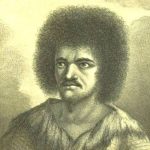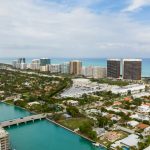
Country Overview:
The island, with its fine natural harbor at Castries, was contested between England and France throughout the 17th and early 18th centuries (changing possession 14 times); it was finally ceded to the UK in 1814. Even after the abolition of slavery on its plantations in 1834, Saint Lucia remained an agricultural island, dedicated to producing tropical commodity crops. Self-government was granted in 1967 and independence in 1979.
Location:
Caribbean, island between the Caribbean Sea and North Atlantic Ocean, north of Trinidad and Tobago
Geographic coordinates:
13 53 N, 60 58 W
Area:
Total: 616 sq km, land: 606 sq km, water: 10 sq km
Area – Comparative:
3.5 times the size of Washington, DC
Land boundaries:
0 km
Coastline:
158 km
Climate:
Tropical, moderated by northeast trade winds; dry season January to April, rainy season May to August
Terrain:
Volcanic and mountainous with some broad, fertile valleys
Elevation extremes:
Caribbean Sea 0 m
Highest Point:
Mount Gimie 950 m
Natural Resources:
Forests, sandy beaches, minerals (pumice), mineral springs, geothermal potential
Population:
159,585 (July 2008 est.)
Nationality:
Saint Lucian(s)
Nationality:
Saint Lucian
Ethnic groups:
Black 82.5%, mixed 11.9%, East Indian 2.4%, other or unspecified 3.1% (2001 census)
Religions:
Roman Catholic 67.5%, Seventh Day Adventist 8.5%, Pentecostal 5.7%, Rastafarian 2.1%, Anglican 2%, Evangelical 2%, other Christian 5.1%, other 1.1%, unspecified 1.5%, none 4.5% (2001 census)
Languages:
English (official), French patois
Country Name:
Saint Lucia
Government Type:
Parliamentary democracy
Capital Name:
Castries
Independence:
22 February 1979 (from UK)
National Holiday:
Independence Day, 22 February (1979)
Constitution:
22 February 1979
Legal System:
Based on English common law; has not accepted compulsory ICJ jurisdiction
Executive Branch:
Chief of state: Queen ELIZABETH II (since 6 February 1952); represented by Governor General Dame Pearlette LOUISY (since September 1997)
Head of Government:
Prime Minister Stephenson KING (since 9 September 2007); note – Sir John COMPTON died in office Friday, 7 September 2007
Cabinet:
Cabinet appointed by the governor general on the advice of the prime minister
Elections:
Elections: the monarch is hereditary; the governor general is appointed by the monarch; following legislative elections, the leader of the majority party or the leader of a majority coalition is usually appointed prime minister by the governor general; deputy prime minister appointed by the governor general





